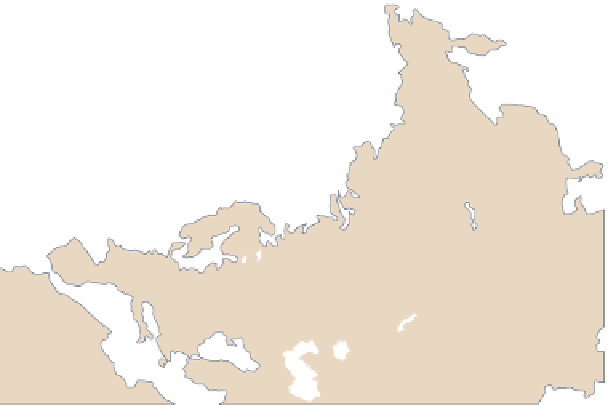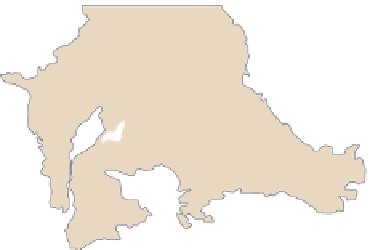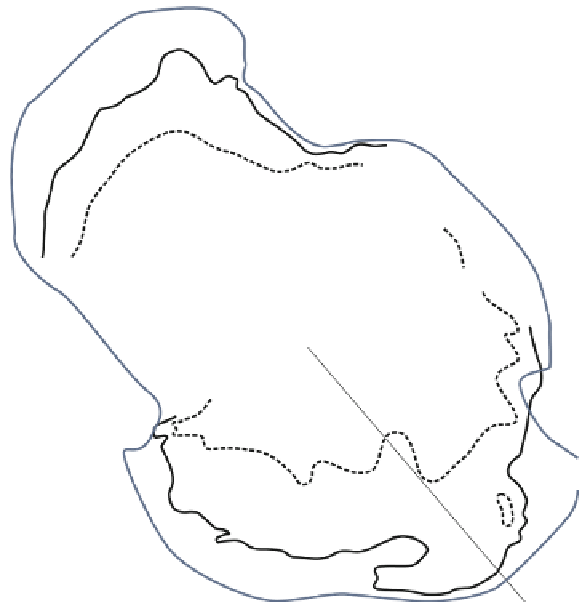Geoscience Reference
In-Depth Information
Fig. 2.13
The zone of seasonally freezing lakes in the northern hemisphere (Bates and Bilello
1966) and the 0
C climatological isotherm taken from Fig.
2.1
. The contours 100 and 180 refer to
the mean length of the ice season (days)
°
estimated that the seasonal ice in Siberian lakes can grow to approximately 2 m during one
winter (Kirillin et al. 2012). As a theoretical upper limit, Kirillin et al. (2012) refer to
270 cm based on the freezing-degree-days in the coldest place in the northern hemisphere
(Oymakon, East Siberia). In medium-size lakes (10 km scale), the thickness of ice needs
to be more than 10 cm to span a solid, stable ice sheet across the lake.
The ephemeral zone can be several latitude degrees wide. In eastern Europe such lakes
are found south from about 55
N, e.g., in Northern Germany and Hungary. In this zone
the nature as well as the people need to adapt life for both ice and ice-free winters. Winter
1963 was the latest very cold winter in Central Europe, and at this extreme, even the deep
Lake Constance (Bodensee) bordering Austria, Germany and Switzerland froze over
(Fig.
2.15
).
°



























































































Search WWH ::

Custom Search